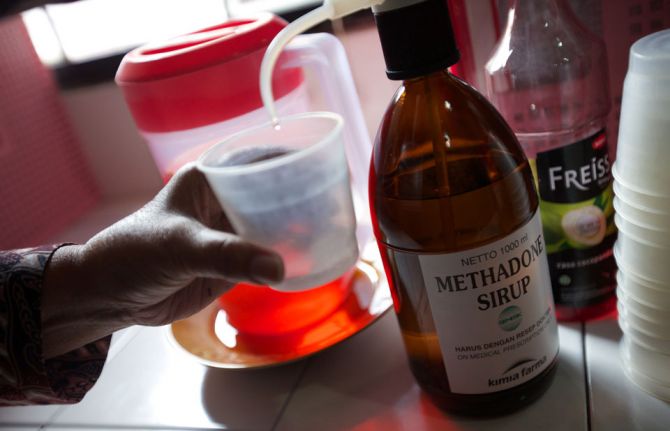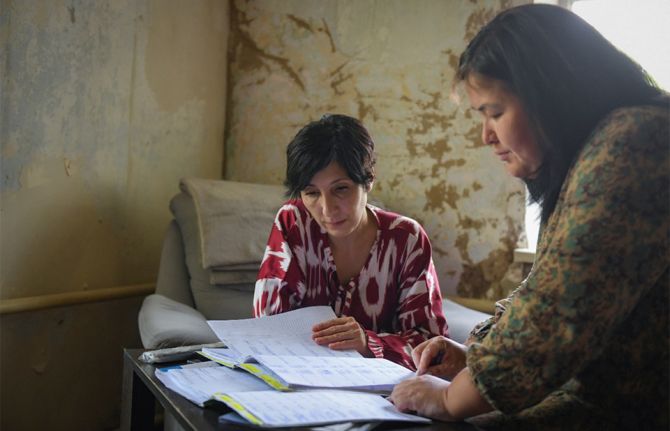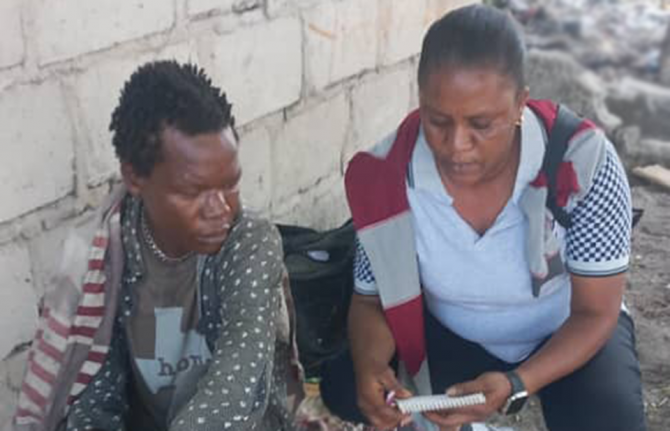

Feature Story
Harm reduction programmes: saving lives among people who inject drugs
21 June 2017
21 June 2017 21 June 2017Harm reduction programmes are saving lives among people who inject drugs. Unfortunately, not everyone in need of such services has access to them. UNAIDS has produced a series of videos to raise awareness about harm reduction and to call for the provision of harm reduction services to all in need.
People who inject drugs are among the key populations most at risk of acquiring or transmitting HIV. Yet they are also among those with the least access to HIV prevention, care and treatment services, because their drug use is often stigmatized and criminalized.
Estimates show that worldwide there are approximately 12 million people who inject drugs, 1.6 million (14%) of whom are living with HIV and 6 million (50%) of whom are living with hepatitis C. HIV prevalence among women who inject drugs is often greater than among their male peers. UNAIDS estimates that 140 000 people who inject drugs were newly infected with HIV globally in 2014 and there was no decline in the annual number of new HIV infections among people who inject drugs between 2010 and 2014.
The tools and strategies required to improve the health and lives of people who use drugs are well known and readily available. Needle–syringe programmes reduce the spread of HIV, hepatitis C and other bloodborne viruses. Opioid substitution therapy and other evidence-informed forms of drug dependence treatment curb drug use, reduce vulnerability to infectious diseases and improve uptake of health and social services.
The evidence is overwhelming—harm reduction works. Opioid substitution therapy has been associated with a 54% reduction in the risk of HIV infection among people who inject drugs and has been shown to decrease the risk of hepatitis C infection, to increase adherence to antiretroviral therapy for HIV, to lower out-of-pocket health expenditures and to reduce opioid overdose risk by almost 90%.
In Australia, 10 years of needle–syringe programming has reduced the number of cases of HIV by up to 70% and decreased the number of cases of hepatitis C by up to 43%.
The evidence is also clear that laws and policies that hinder access to health services for people who use drugs do not work. For example, police surveillance of health-care and harm reduction service providers discourages people who inject drugs from accessing those services.
Having laws that offer alternatives to prosecution and imprisonment for drug use and possession of drugs for personal use reduces the harmful health effects associated with drug use and does not result in an increased use of drugs.
Community-led harm reduction programmes can reach people who inject drugs with needle–syringe exchange and other services and provide linkages to testing, treatment and care for people living with HIV. In Pakistan, for example, the Nai Zindagi Trust, a peer-led outreach programme, has been in operation for 25 years and reaches about 13 000 street-based people who inject drugs through more than 600 trained peer educators.
Despite the large body of evidence, however, only 80 of the 158 countries in which injecting drug use has been documented have at least one location offering opioid substitution therapy, and only 43 countries have programmes in prisons. Needle–syringe programmes are available in only 90 countries and only 12 countries provide the recommended threshold of 200 sterile needles per person who injects drugs per year.
The combination of unavailability of harm reduction services and inadequate coverage where available puts progress in the response to HIV at risk. It also denies life-saving health services to millions of people who inject drugs.



